GUEST POST: Composition of Transformations Foldable
This blog post contains Amazon affiliate links. As an Amazon Associate, I earn a small commission from qualifying purchases.
Hi all! Today I’m super excited to share a guest post from a blog reader who teaches 8th grade Geometry in Washington. She wants to share the very first foldable she created for her geometry students. It is a composition of transformations foldable. Since this is her first post, she doesn’t want me to include her name which I totally understand. Back in 2011, I started blogging anonymously myself. I also still remember my first foldable fondly. I had no idea back then that it would be the first of so, so many!
I’ll let her take it away!
Greetings from the great Pacific Northwest! I come to you from the cool, green shadow of Mt. St. Helens to inject some new-found coolness into your math world. Some background- since 1987, I’ve been teaching math in a variety of settings- both public and private schools, from 6th grade through 12th , and am currently teaching 8th grade honors students in public middle school.
I found this blog last spring, but didn’t pay close attention until this August when I found I would be teaching Geometry to 8th graders. Geometry is usually a 10th grade class, and I haven’t taught it in a long time, so I needed some inspiration. (Gotta keep these advanced kiddos working and learning even though they think they know so so much.)
I started reading in earnest with Sarah’s first blog post (of course at the beginning- can you say OCD?) and I must say this old dog is learning some new tricks! Sarah has so much crunchy math goodness for Algebra, but not a lot for Geometry, so I made up a foldable of my own and I hope you enjoy it and find it useful.
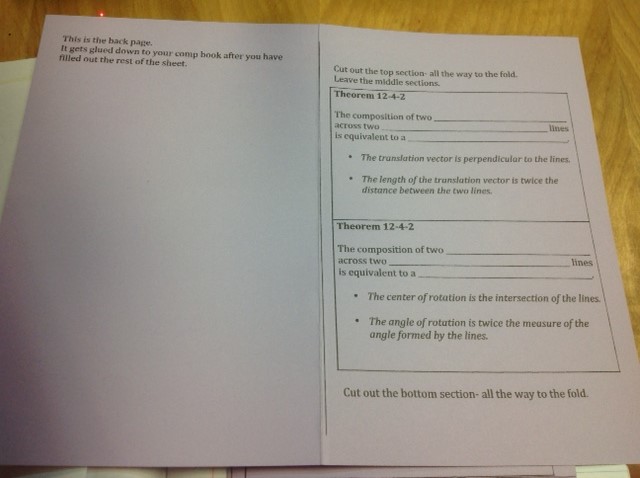
The topic is Compositions of Transformations and the information all comes from our Holt textbook pages 848 thru 850 (not an endorsement, just letting you know the words aren’t all mine). We started the class period in small groups- each group discussing what would happen if you took a transformation like a reflection and then rotated it, or some other combination of transformations. I wrote the different combinations on index cards and gave them to the groups so they had very specific guidelines for their discussions.
The small groups then shared with the larger group and we spent about 30 minutes giving theories and counterexamples and drawing lots of “what if” pictures. After we had discussed, and the vocabulary was familiar, I gave them the foldable to cut, fold, fill out, and glue down. (You should know that we have 90 minutes of math class time every day.) The students are used to Cornell notes in my class, so this was new and different and I think they liked it. I plan to increase my use of foldables and make their comp books a hybrid Cornell/ISN that they can take to high school next year.
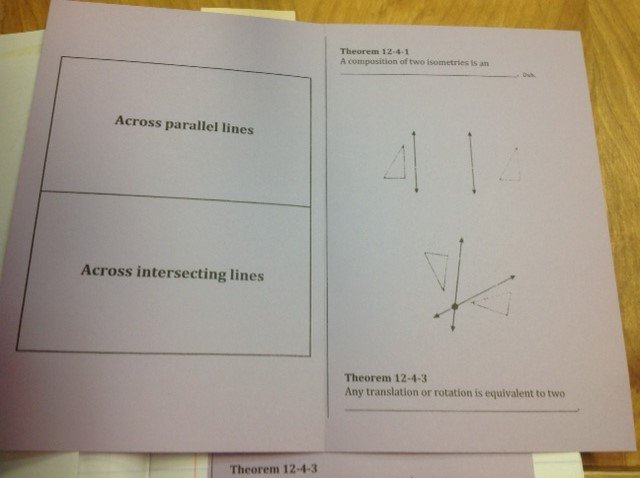
I wrote a lot on the foldable before I photocopied it because the theorems are very wordy. I thought they might be confusing but because we discussed so much at first, the students were very quick to fill in the blanks with the correct terms. They also had no problem sketching the triangles as they were reflected about the parallel lines and the intersecting lines. (The reason it says “Duh” at the end of the top theorem is because it is essentially the Transitive Property and kids find it weird that mathematicians have named properties for things that are such common sense. So I indulge them with an occasional, “Duh” for the things that are common sense.)
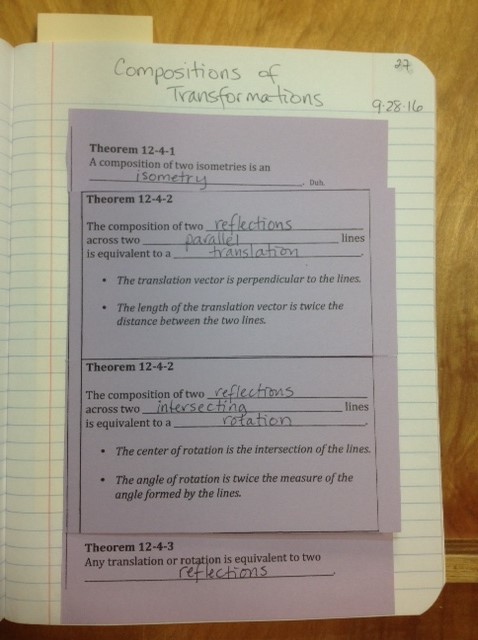
I also put instructions on the foldable about where to cut and where to glue. After almost 30 years of teaching, I have found that instructions have to be very specific, spoken out loud, written down and accompanied by visual aids of the finished product. And then you still have to monitor the class and help some kids with glue sticks. (Usually, about half the boys will stick their fingers to the paper or to their desk. You should see them with the tape…)
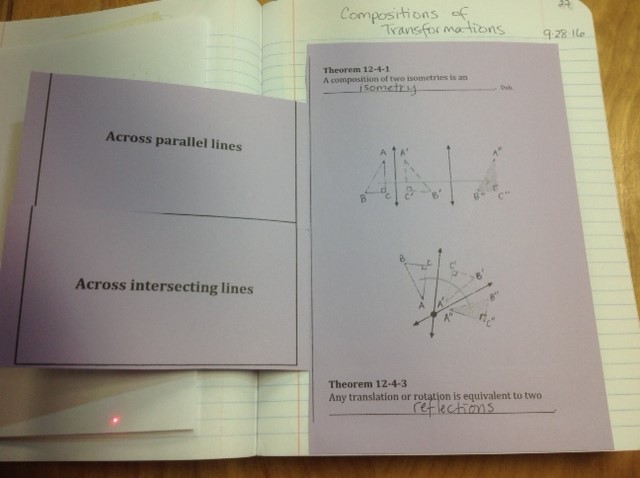
Thanks for letting me do some show and tell with my first foldable. I hope to see some of everyone’s creations and cool Geometry stuff throughout the school year!
Okay. It’s Sarah again! I just want to thank our lovely guest poster for sharing her foldable with us! If you liked what you read, please leave her an encouraging comment. It can be quite terrifying to put yourself and your teaching out there like this. I’d also appreciate it if you’d help me convince her to join twitter!

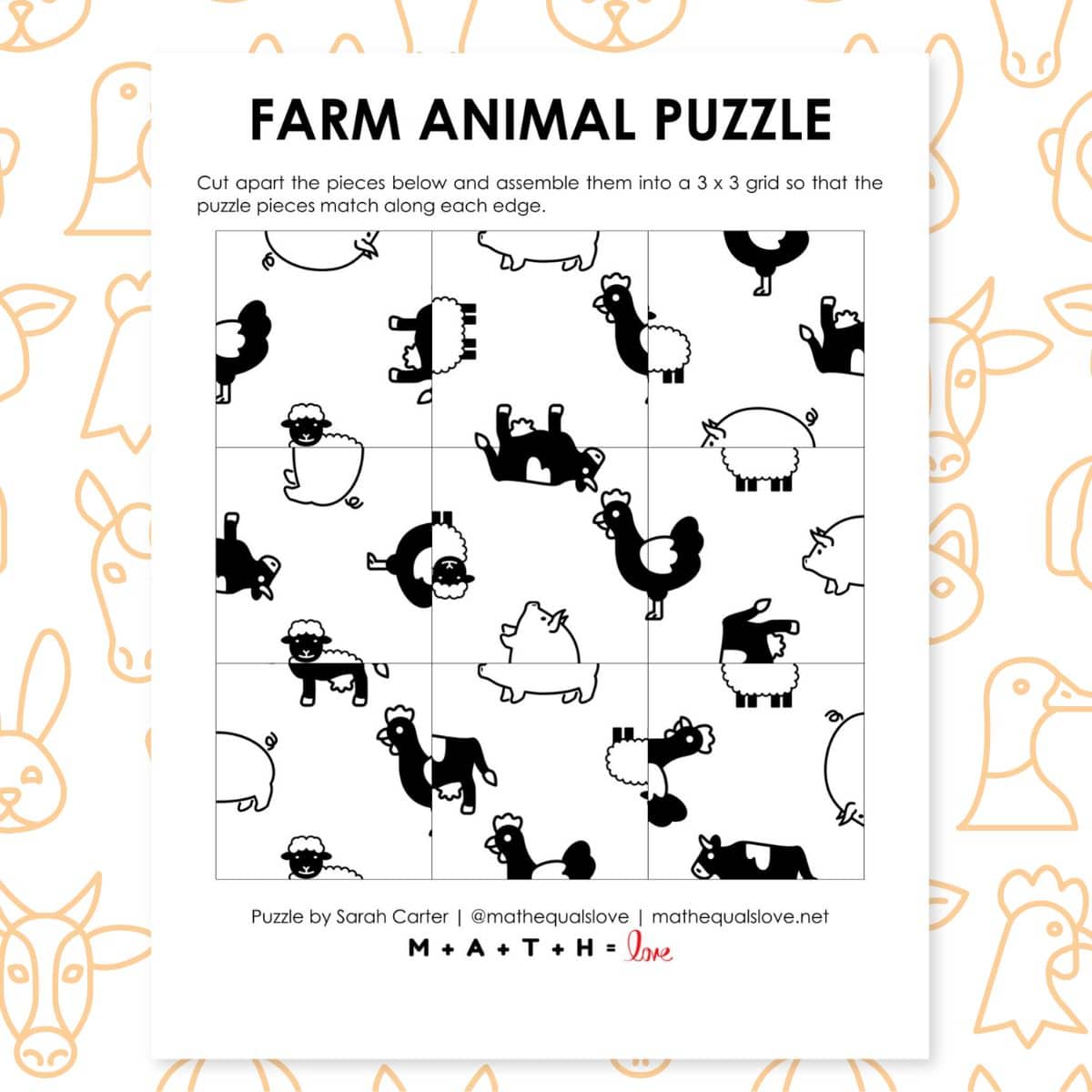
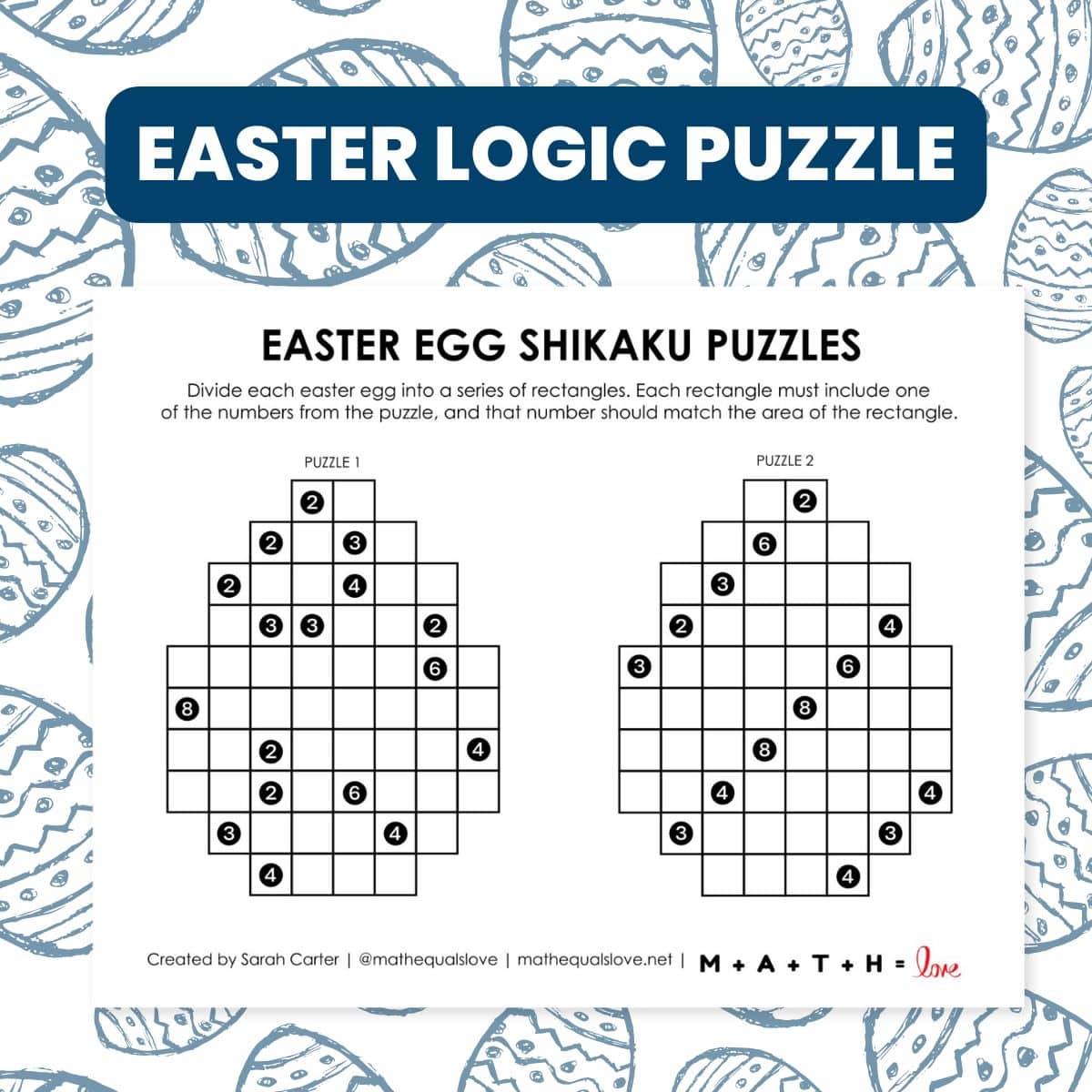
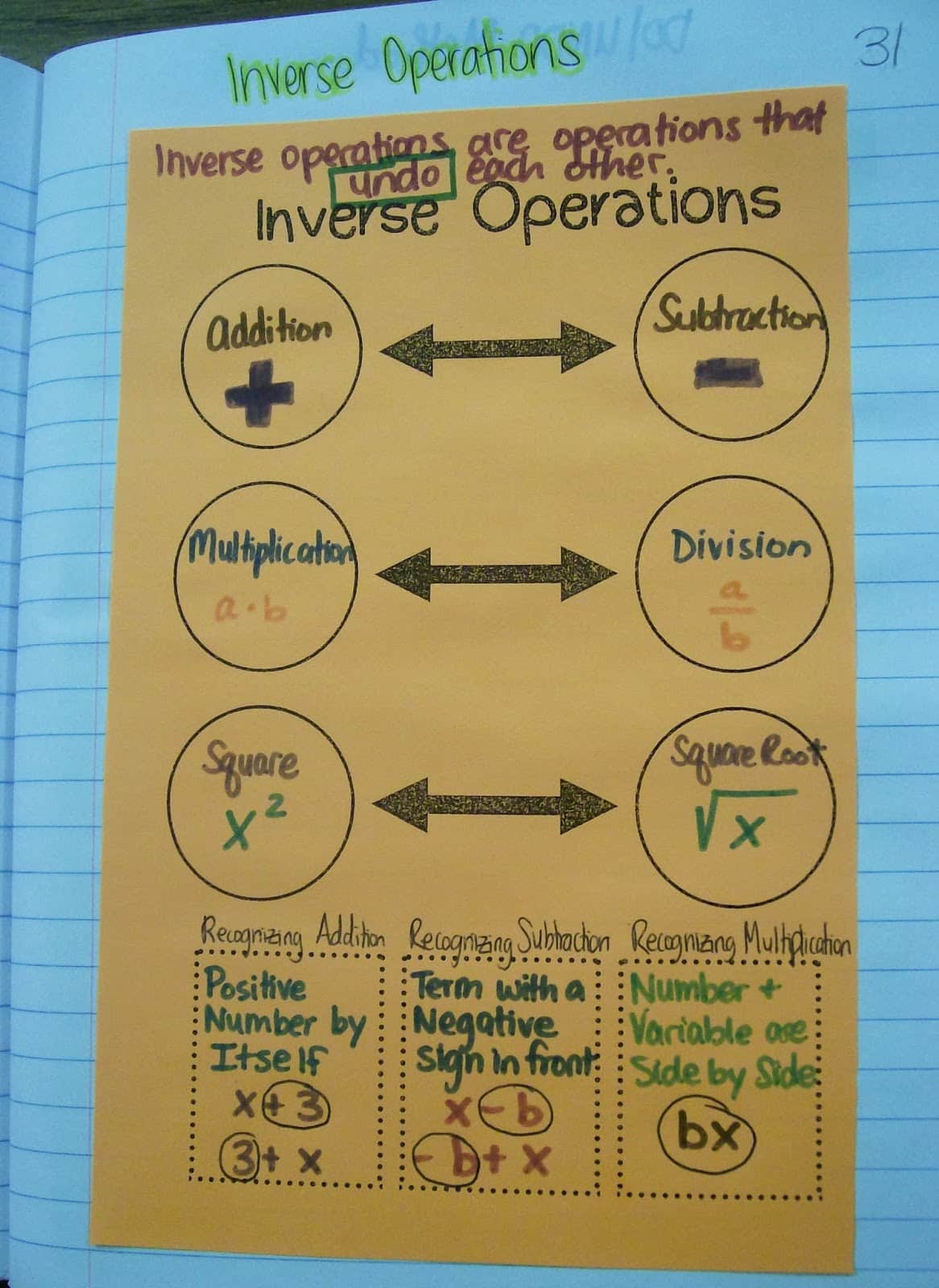
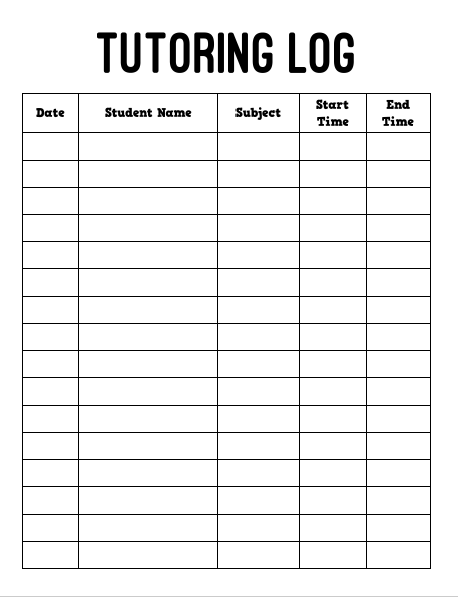


I'm not a math teacher, so I don't feel qualified to comment on the content. However, with that being said, I enjoyed the post. I think you have a great "voice" and congrats for putting yourself out there!
I am excited to try this. (And Scared) I do not teach transformations often, and I am not very spatial, even thou I am a math teacher. 🙂
This is such a hard topic for geometry kids! I can’t wait to use it next year (already passed this topic).